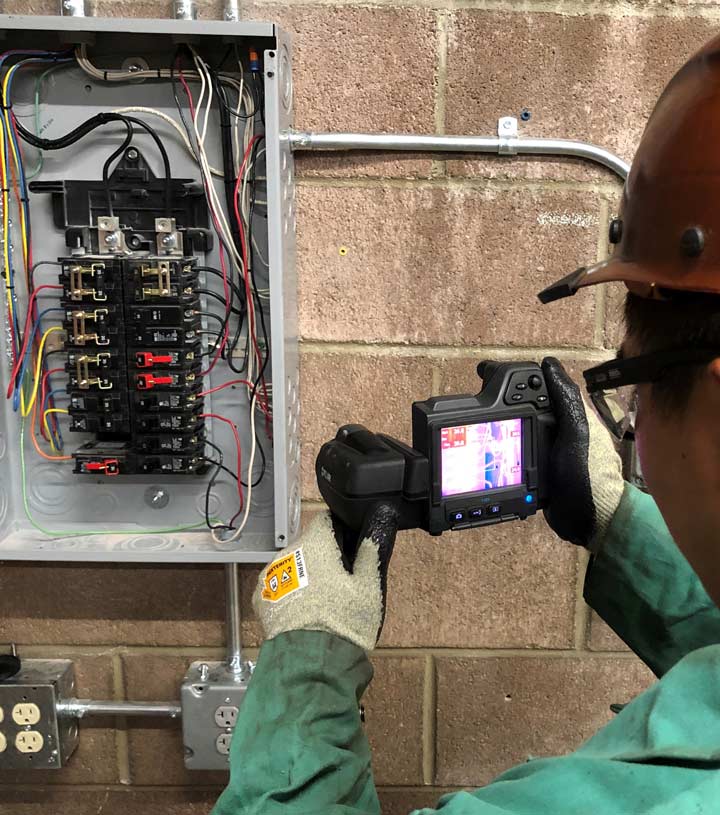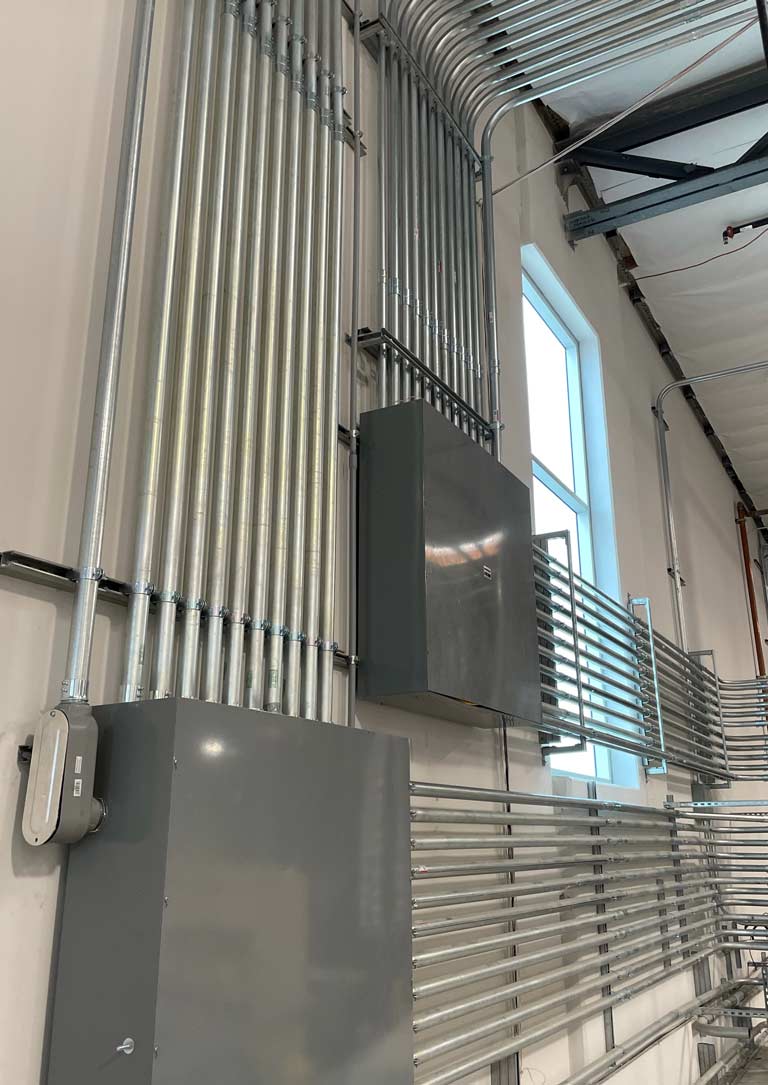Southwest Industrial Electric

“We have doubled since our implementation of Simpro.”
Kristin Larson, CEO
Headquarters
Los Angeles, CA
Industry
Commercial and Industrial Electrical
Employees
60
About
 Southwest Industrial Electrical has been operating for over 40 years. The company caters to large manufacturing and distribution businesses as well as other commercial and industrial facilities.
Southwest Industrial Electrical has been operating for over 40 years. The company caters to large manufacturing and distribution businesses as well as other commercial and industrial facilities.
Kristin Larson, CEO, has been working in the family-owned business for 15 years.
“I started working in the company with my uncle 15 years ago, and at that time, we were a bit smaller. It was mainly him and one person in the office. From there, we’ve just continued to grow,” Kristin said.
Kristin monitors the overall health of the business and works with the leadership team to ensure everything in the business runs smoothly.
“My goal is to make sure that we deliver a great product to our customers and that our service is outstanding. I also make sure that the way we operate is efficient and viable and that the business does well,” Kristin said.
Kristin and her team find great satisfaction in the work they do because they help vital businesses carry out their own services.
“We get to work with companies that really make the world go ‘round. We work with companies in distribution or manufacturing, and it really is what everyone needs to survive in this world,” she said.
“By doing the electrical installations and repairs for them, we get to assist with that directly, and we love supporting their ability to do everything they need to do.”
The challenges
Double work and manual processes slowed down productivity
With their efforts playing a vital role in the manufacturing and production of goods, being able to quickly and efficiently service customers was challenging due to double handling and outdated manual processes.
The team relied on Microsoft programs like Word and Excel to track projects and create quotes that were then printed out and shared between departments.
Important papers and job cards were easily lost and projects became disorganized.
“We used to have job folders with all the information in them. These folders had paper printouts of everything and were constantly being handed from person to person,” Kristin said.
“We had people that were using the computer for something, then printing everything out, only for that to then go to someone else who would take it and input it into the computer again,” she said.

“All of our scheduling was on a big wall with printed-out job cards. Every week we had to go through all of the job cards to make sure that we didn't lose any job cards and that none had fallen down. It was a lot to make sure everything ran smoothly.”
Kristin knew that they needed to streamline their processes to keep up with the growth they were already seeing.
“We had been growing for the last four to five years by 30 to 50% per year. And, we just got to a point where we knew if we didn’t do something to streamline things, we would have to get more and more people involved which would make it so we would not be viable as a company.
“We needed to produce more with the people that we had.”
Kristin knew that field service management software was the right solution.
“We realized that we had been doing a lot of double work and double-checking and that by finding a software that could eliminate all of that, we would automatically be running more efficiently, [and] be able to increase productivity.”
The results
Trading double work for double-digit growth
 Kristin had been looking for software for many years but struggled to find a solution that would work with Southwest Industrial Electric’s workflows.
Kristin had been looking for software for many years but struggled to find a solution that would work with Southwest Industrial Electric’s workflows.
They needed software they could use to run small day-to-day jobs like service calls, but that they could also use to manage large projects involving multiple people over multiple months.
“It was very hard to find a software that allowed us to run both things. There is a lot of software out there that has day-to-day [capability], but the larger projects were the problem,” she said.
It was also important for the software to work well with their specific processes.
“I had to make sure that the scheduling and purchasing worked well for the way we operate and that we didn't have to change our organization too much to align with the software.
I found that Simpro had everything we needed and would be able to work and integrate with very little changes. It aligned with our overall organizational flow,” Kristin said.
“We didn't have to adapt to Simpro; Simpro would adapt to us.”
Kristin and her team not only used Simpro to eliminate the need for printed job cards and paperwork but also used it to streamline their field-to-office communication.
Before Simpro, field staff had to make multiple trips back and forth from project site to office in order to update information on customer accounts. They filled out endless paperwork and wrote everything down by hand, which wasted time and made it more difficult to complete work efficiently.
Now, field staff use Simpro’s mobile app, where they can make updates and notes on project progress from site, or from anywhere else, at any time.
This has not only saved time for both field staff and office staff but also allowed the whole team to deliver better customer service.
“One thing we hear from our customers a lot is how everyone they deal with is able to be so helpful and quick to service them,” Kristin said.

“Having Simpro right there where we can pull the customer up, pull up their job history and see what's happening with their account, makes it so much easier for everyone in every department to help that customer.”
Since implementing Simpro in December 2018, Southwest Industrial Electric increased their production and overall efficiency, leading to double-digit growth.
“Before we had Simpro, we were billing about half of what we billed last year, so we have doubled since our implementation of Simpro,” Kristin said.
This growth also allowed them to expand their service to new states, including a new location they plan to open in Texas.
“In the last couple of years, we have started working in Arizona and Nevada, and we’re able to run our projects through the software just like they’re in California,” Kristin said.
“We would not have been able to expand to these other states without Simpro.”
Word of advice?
Kristin agrees that, as with any new technology, there is a bit of a learning curve to overcome, especially for larger businesses implementing Simpro.
Each person needs to learn, understand and know how to use the software.
“Take each thing up one at a time. Make sure that your team knows that this is a process, and it’s something new, so it’s important to take the time to understand it, smooth things out and make sure that [everyone] is using it correctly,” she said.
With support from Simpro’s Implementation Team, Kristin’s team now uses Simpro with ease.
“Now it’s like second nature to everyone here; we know how to use it in our sleep,” Kristin said.
Kristin continues to recommend Simpro to other commercial and industrial electrical businesses looking to run more efficient operations.
“Simpro makes things a lot easier, [because] we can coordinate and organize all of the different areas of our business with the click of a button,” she said.
“I would recommend Simpro to other companies. It just makes sense in terms of integrating everything and having everything in one place.
“You can see your jobs and your scheduling and how much your billing, from wherever you are. Log in, and you know what's happening.
“It really makes it easier to run your business.”
Want to achieve better operational efficiency and double your growth like Southwest Industrial Electric?
Find out how we can support your business.